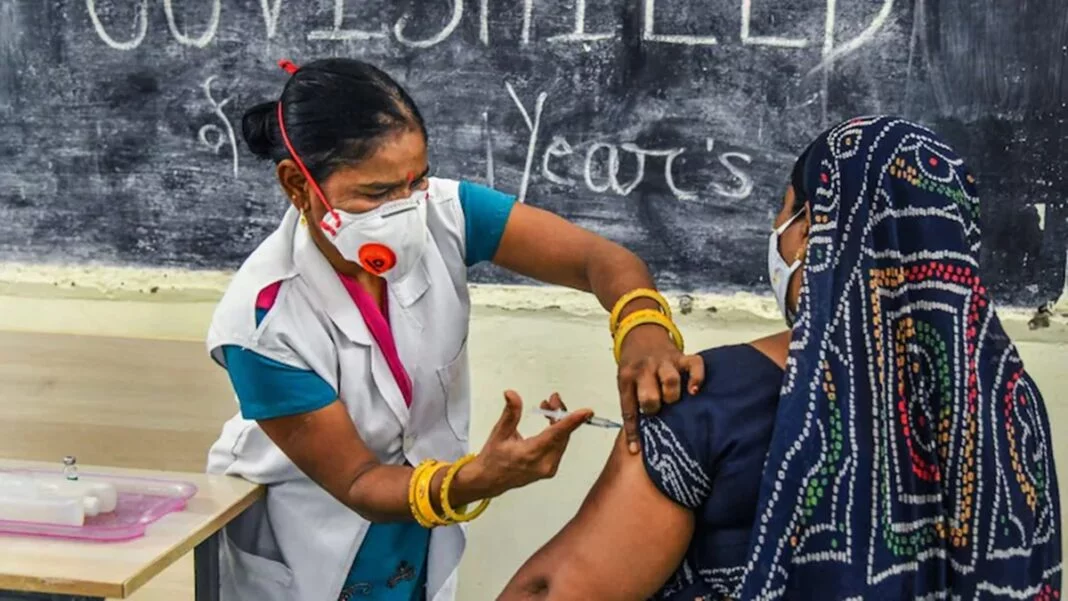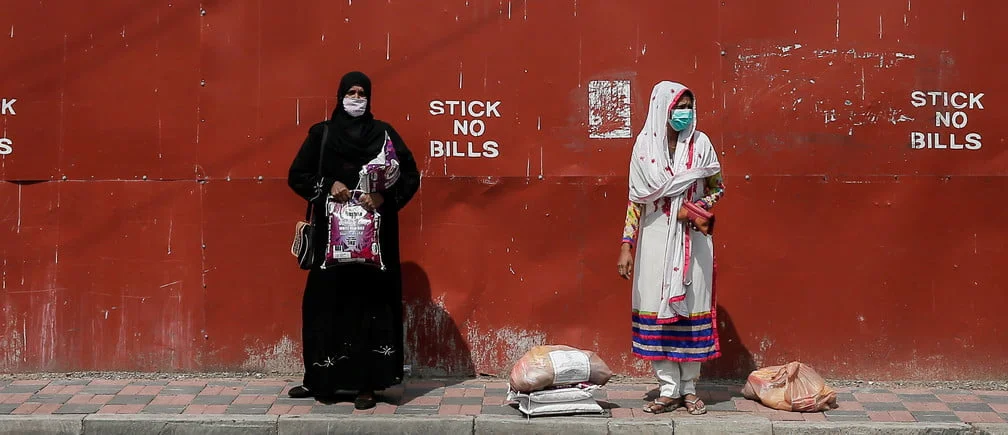The COVID-19 pandemic (referred to henceforth only as the pandemic) was an unprecedented health emergency which impacted all facets of life and led to insurmountable loss. The long and lingering impact of the pandemic on health and overall wellbeing is unimaginable and scarcely explored— it has significantly altered the ways people lead their lives at individual and social levels. It is also well-documented that the pandemic aggravated existing inequalities and severely affected the achievement of development goals.
The impact of the pandemic on developmental challenges therefore cannot be undermined and the full import of this is only beginning to unravel.
One such worrying insight was published by the UN in 2022, declaring that the achievement of full gender equality would at least take 300 more years, since development challenges including the pandemic had aggravated existing gender inequalities. The impact of the pandemic on developmental challenges therefore cannot be undermined and the full import of this is only beginning to unravel.
An overview of the results from the Science Advances study
Although considerable planning and resources have since been dedicated to COVID-19 recovery globally, efforts to reverse the widened development cleavages, catalysed by the pandemic have not been noteworthy. Through analysis of mortality and life expectancy data from 2020, a recent research study by Science Advances illustrates the disproportionate impact of the pandemic on marginalised groups by analysing disaggregated data about the decline in life expectancy and mortality rates. It establishes that while substantial losses in life expectancy and mortality were noticed worldwide, data from India illustrates its salient development disparities, where higher decline in life expectancy and mortality were observed among marginalised groups.
Extrapolating data from the NFHS-5 of 2021, the research infers that the overall rate of reduction in life expectancy in India was the highest among all High Income Countries (HICs) and paralleled that of countries with lower per capita incomes such as Brazil and Mexico. Retrospective analysis of this data was used to estimate mortality in 2020 to fill in the lack of rigorous mortality surveillance and monitoring and high quality data of the aforementioned indicators. This study also comprehensively depicted the differential impact of the pandemic on marginalised communities— specifically those discriminated against based on gender, religion and caste. While these disparities were prevalent prior to 2020 as well, the COVID-19 pandemic was a huge contributor in exacerbating them.
In stark contrast to global patterns of higher mortality and life expectancy decline in males, the estimated decline in life expectancy and mortality was higher for women in India. The average life expectancy for women declined by 3.1 years and higher female deaths were also registered in the recorded mortality data. The reproduction of this pattern was recorded in children suffering from COVID-19 in Kerala where higher mortality was reported in female children relative to male children. This also cuts across most other marginalised groups, where the life and survival of women was more compromised. Dissecting mortality data highlighted that women in the phases of childhood, early reproductive years and those among 60 were most vulnerable to the pandemic. This data is consistent with the patriarchal social structure within India that neglects and/or undermines women’s health and wellbeing.
This pattern of higher declines in life expectancy and mortality relative to privileged groups were also recorded across people of marginalised castes and religions. Among marginalised social groups, the highest life expectancy decline was observed in Muslims (5.4 years) whose very survival has been endangered by hyper-nationalist, Islamophobic rhetoric for the past decade, which peaked during the pandemic. Least affected as per this metric were people from the OBC community, whose decline in life expectancy was similar to that of oppressor-caste Hindus. To provide additional context, data from the report proves an invaluable resource.
Among marginalised social groups, the highest life expectancy decline was observed in Muslims (5.4 years) whose very survival has been endangered by hyper-nationalist, Islamophobic rhetoric for the past decade, which peaked during the pandemic.
‘Relative to a 1.3-year life expectancy loss among high-caste Hindus, the loss for Muslims was 5.4 years, for STs was 4.1 years, and for SCs was 2.7 years. The decline for OBCs of 1.3 years was similar in magnitude to that among high-caste Hindus.’
It is also important to acknowledge here that this research does not explore the indirect implications of the pandemic and analyses data from only specific states (as in the NFHS-5 data subsample) for a specific period of time. It therefore cannot be considered representative of all the realities across the length of the COVID-19 pandemic and must be approached with this context.
The impact of the COVID-19 pandemic on women’s health
In India, the family is a patriarchal structure and the site of much discrimination, gender inequality and unequal social norms that fully surfaced during the pandemic. The health of Indian women is often not a priority within households and their value is dependent on their contributions to the family. The expenditure and attention on women’s healthcare within families is surpassed by that on men and higher mortality and life expectancy declines can be perceived as the direct consequence of this pattern.

Additionally, during the pandemic, all resources of the health infrastructure were deployed to combat the COVID-19 outbreak, which left limited resources that responded to the protection against and prevention of gender-based violence. The term ‘shadow pandemic’, used to describe the rise in gender-based violence during the COVID-19 pandemic, does not sufficiently capture the scale and extent of gender-based violence during the period. In May 2020, which witnessed the imposition of the strictest lockdown and containment measures, there was a 131% increase in complaints of domestic violence. Overall in 2020, the National Commission for Women, reported a 30% spike in crimes against women. This is not unique to the COVID-19 pandemic as similar patterns were also noticed during the Ebola outbreak in West Africa between 2013 and 2015. Natalia Kanem, executive director of the UN Population Fund (UNFPA), expressed her concerns about the long-term and short-term consequences of the COVID-19 pandemic on girls and women.
‘In a word, it (the condition of girls and women) is devastating. There are many women in situations of desperation right now and all this tallies up to devastating health and social consequences for that woman, for that girl, for that family, for that community.’
The lockdown strategy translated into increased care work responsibilities for women and the stay-at-home living conditions, with severely restricted access to protection measures against gender-based violence also contributed considerably to its increase. Presently, there is insufficient data to fully grasp the impact of domestic violence on other marginalised groups. Past research has shed light on how Dalit women experience more domestic violence within their families and caste-based violence outside their families and the pandemic likely aggravated this and similar realities.
Past research has shed light on how Dalit women experience more domestic violence within their families and caste-based violence outside their families and the pandemic likely aggravated this and similar realities.
The pandemic also denied gender marginalised people the access to timely and life-saving sexual and reproductive health services and products were categorised as non-essential during the pandemic. Sexual and reproductive wellbeing remains a distant reality in India and the pandemic led to the breakdown of existing services, including disrupting the supply chain, restricting travel and restricting access to healthcare infrastructure, which are indispensable for the health and wellbeing of gender marginalised people. The Foundation for Reproductive Health Services India, estimates that,
‘The disruption caused from lockdowns could leave up to 26 million couples in India unable to access contraception, leading to an additional 2.3 million unintended pregnancies and over 800 000 unsafe abortions, which is the third leading cause of maternal deaths in India.’
The impact of the pandemic on Muslims
The COVID-19 pandemic witnessed an unprecedented rise in fake news since misinformation proliferated on social media and other informal channels. An analysis of fake news in India by BBC revealed a rise in misinformation targeting and maligning Muslims in the first week of the pandemic. The members of the Tablighi Jamaat congregation, an Islamic religious group tested positive en masse during this time, which led to the gross misinformation that COVID-19 was being spread by Muslims deliberately.
Combined with the growing anti-Muslim rhetoric, especially in the backdrop of the discriminatory Citizenship Amendment Act, Muslims were denied life-saving and preventive healthcare. Moreover, due to the false information that Muslims were deliberately attempting to spread COVID-19, their livelihoods suffered, which again, in turn left them with fewer resources to access healthcare. Across the country, several incidents of violent attacks on Muslims and Muslim COVID-19 volunteers were also reported— the trauma of such vicious and vitriolic violence also has significant health implications for Muslims.
The impact of the pandemic on caste marginalised groups
Potentially the least documented impact of the pandemic is that on caste marginalised groups, despite the intricate and longstanding relationship between labour and caste in India. Sanitation and hygiene were two key attributes in preventing the spread of the pandemic and this work is most often forced onto Dalit people. Sanitation workers are some of the most precariously employed and vulnerable groups since they work in subhuman conditions (such as sewers and septic tanks although manual scavenging is banned in India).
The lack of provision of safety equipment and PPE kits exposed them directly to the COVID-19 virus. As there are no enforced social security measures to protect them, missing work to recover or seek medical support is not viable. The limited resources combined with the overwhelmed public infrastructure made seeking medical support more challenging. Living, working and commuting in areas without social distancing was a reality during the pandemic and there were no notable measures by the State to relieve these conditions. Inadequate WASH facilities and access to essential needs meant that regular sanitation and deep cleaning were preventive tools of the privileged.
Development goals and the social realities of a country must be front and centre in the design of public policy and disaster response since disasters only aggravate existing inequalities.
The social and health consequences of the COVID-19 pandemic must not be siloed and instead must be deeply studied to understand how ironclad early-preparedness and mitigation measures can be planned and implemented so that existing development progress is not lost and the cascading human cost can be reduced. Development goals and the social realities of a country must be front and centre in the design of public policy and disaster response since disasters only aggravate existing inequalities.
About the author(s)
Abhinaya Sridhar is an undergraduate student of English literature. She enjoys documenting her personal experiences and opinions and occasionally indulges in writing fiction. She is a creature of habit and can be found listening to the same classical songs on loop or cooking up a storm in the kitchen. She can be found on Instagram






